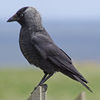What setting is best?
Mar 1, 2018 11:58:50 #
wayne barnett
Loc: Grants Pass, Oregon
What I do with any situation like this, using a digital camera, is to set my camera up on a tripod or hand held and begin shooting at a best guess exposure on manual mode. Once taken adjust the exposure using a faster or slower shutter speed or change in ISO or aperture. With today's digital cameras the photographer can delete all the trial shots with out having to spend many $ in processing and waiting to see where the best exposure may be. The above suggestions are good but as pointed out there are many variables that need to be taken into account that to give or get a definitive answer may be difficult. Shoot a lot of pictures and take lots of notes. Most cameras record the meta data for each shot. Right click on the picture and at the bottom of the list is properties. Click in properties and a screen will display with tabs on various types of data stored. Among the data stored is the exposure records. This is a source of information that can be used for subsequent shoots.
Mar 2, 2018 16:27:09 #
If you're happy going fully manual then go with one of the Loony 11 variations. If you were hoping for something a bit simpler, set the exposure metering to either spot or centre weighted, and make sure that when you get your exposure lock, the moon is central within the viewfinder/viewscreen. The metering mode will be available in one of the menus.
Are you saying that your camera is rotating when you don't want it to? If so, there will be a wing nut or butterfly screw that's looser than it should be. Look for that, and if you find one, tighten it. If you tighten it fully it should lock the camera position. If you want to re-adjust, loosen the screw/wing nut slightly to give you the desired movement, re-adjust and then re-tighten. There may be more than one such screw/nut on the head of the tripod and each will allow you to adjust some positional aspect of the camera (rotation, tilt etc). How tight they are depends on how easily further adjustment can be made. Tightening fully will prevent further adjustment.
Are you saying that your camera is rotating when you don't want it to? If so, there will be a wing nut or butterfly screw that's looser than it should be. Look for that, and if you find one, tighten it. If you tighten it fully it should lock the camera position. If you want to re-adjust, loosen the screw/wing nut slightly to give you the desired movement, re-adjust and then re-tighten. There may be more than one such screw/nut on the head of the tripod and each will allow you to adjust some positional aspect of the camera (rotation, tilt etc). How tight they are depends on how easily further adjustment can be made. Tightening fully will prevent further adjustment.
Mar 6, 2018 15:40:10 #
Why use a smallish aperture with diffraction blur and risk camera shake, when you can open up the aperture two or three stops and increase the speed accordingly? there's no depth of field issues here! I'd try one stop down from fully open, 1/500 or 1/1000 at ISO 100.
Mar 7, 2018 12:23:23 #
Shooting the moon requires settings you use for daylight photography, try setting your camera on manual mode, f/9, 1/250 shutter speed with ISO at about 200. I always shoot to under expose and then adjust the exposure in post processing. I do this to get better detail. If you are shooting with something you want to capture in the foreground you will have to make two images, one exposed for the foreground and another for the moon. When you expose for the foreground the moon will be one white blob with no detail. When you put the two images together you have to remove the moon from the first exposure and lay in the moon with all its glorious detail.
If you want to reply, then register here. Registration is free and your account is created instantly, so you can post right away.


